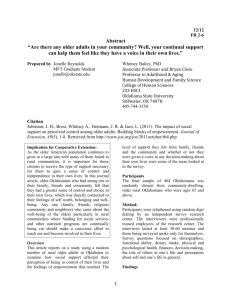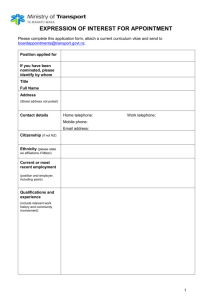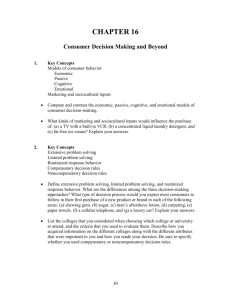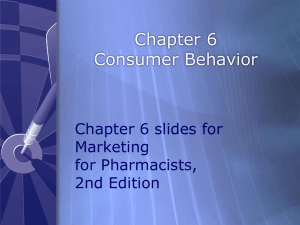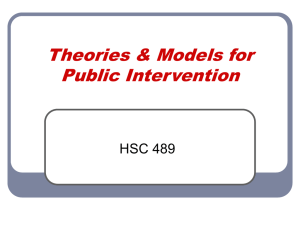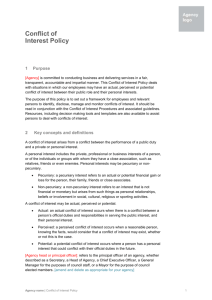Important Determinants
advertisement
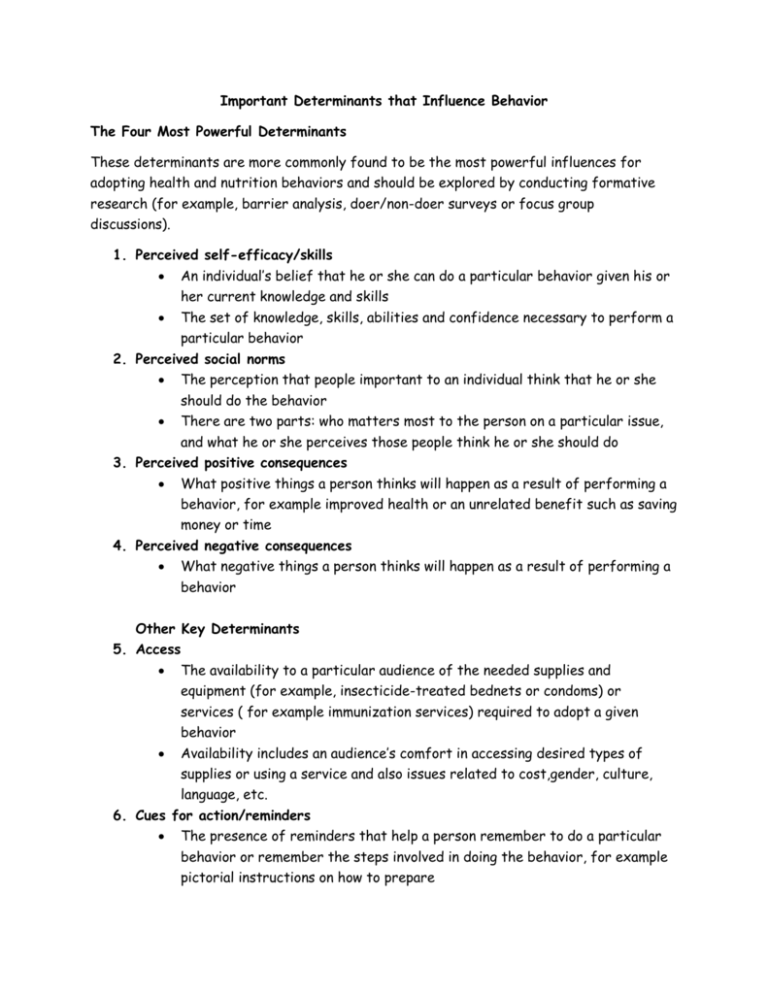
Important Determinants that Influence Behavior The Four Most Powerful Determinants These determinants are more commonly found to be the most powerful influences for adopting health and nutrition behaviors and should be explored by conducting formative research (for example, barrier analysis, doer/non-doer surveys or focus group discussions). 1. Perceived self-efficacy/skills An individual’s belief that he or she can do a particular behavior given his or her current knowledge and skills The set of knowledge, skills, abilities and confidence necessary to perform a particular behavior 2. Perceived social norms The perception that people important to an individual think that he or she should do the behavior There are two parts: who matters most to the person on a particular issue, and what he or she perceives those people think he or she should do 3. Perceived positive consequences What positive things a person thinks will happen as a result of performing a behavior, for example improved health or an unrelated benefit such as saving money or time 4. Perceived negative consequences What negative things a person thinks will happen as a result of performing a behavior Other Key Determinants 5. Access The availability to a particular audience of the needed supplies and equipment (for example, insecticide-treated bednets or condoms) or services ( for example immunization services) required to adopt a given behavior Availability includes an audience’s comfort in accessing desired types of supplies or using a service and also issues related to cost,gender, culture, language, etc. 6. Cues for action/reminders The presence of reminders that help a person remember to do a particular behavior or remember the steps involved in doing the behavior, for example pictorial instructions on how to prepare 7. Perceived susceptibility/risk A person’s perception of how vulnerable they feel to the problem, for example, do people feel that it is possible for people to become HIV positive? 8. Perceived severity A person’s perception that the problem which the behavior can prevent is serious, for example, a mother may be more likely to take her child for immunizations if she believes that measles is a serious disease. 9. Perceived action efficacy 10. 11. 12. The belief that by practicing the behavior one will avoid the problem, that the behavior is effective in avoiding the problem, for example, if children are vaccinated, they will thrive. Perceived divine will A person’s belief that it is God’s will (or the gods’ will) for him or her to have the problem or to overcome it or that God (or the gods) is in favor of the behavior Policy Laws and regulations that affect behaviors and access to products and services, for example, the presence of good land title laws (and a clear land title) may make it more likely for a person to take steps to improve his or her farm land. Culture The set of history, customs, lifestyles, values and practices within a selfdefined group that make it more or less likely that a person will adopt the new behavior May be associated with ethnicity, lifestyle, or gender roles




